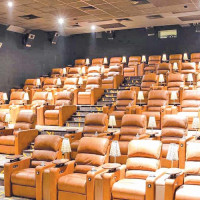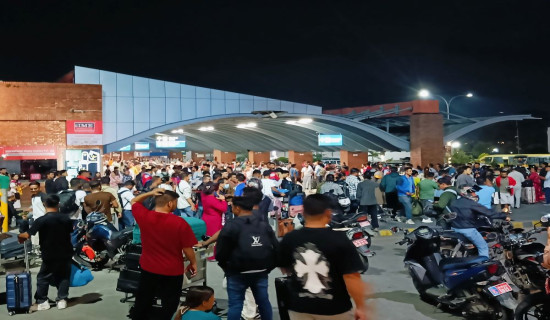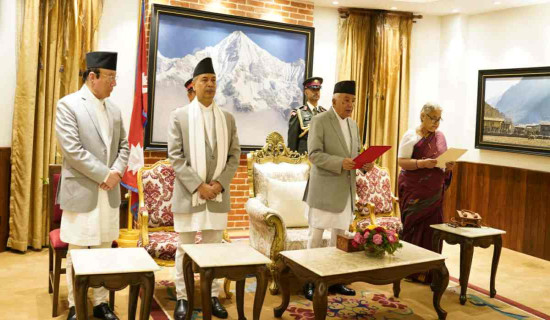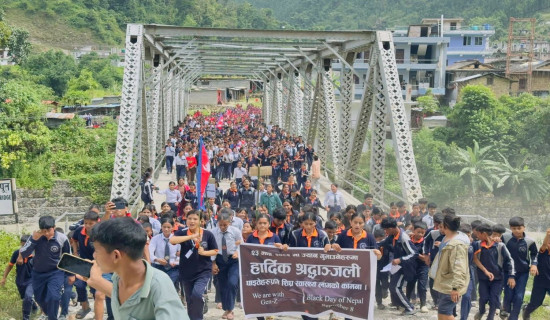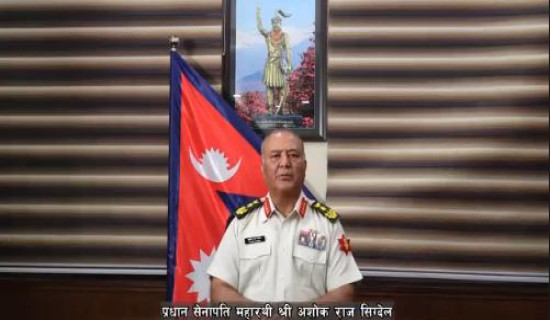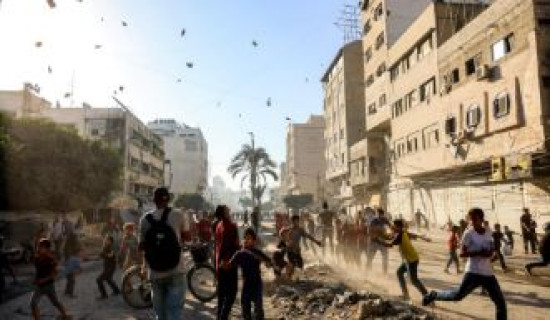- Saturday, 13 September 2025
The temple never restored More than 1,500-year-old deity that used to reside in it
By Aashish Mishra
Lalitpur, Oct.1: On Phulpati, the seventh day of Dashain, two goddesses in the palace complex of Patan are brought out of their main sanctums and carried to their Dashain abodes inside the Mul Chowk, south of the Patan Museum. Both are ancient royal deities that are only brought out once a year during the grand Hindu festival of Bada Dashain. However, while one of the two, Taleju Bhawani, enjoys great fame and popularity among the public and media, the other, Shreemanmaneshwori, seems to go largely unnoticed.
Despite being the older of the two, Shreemanmaneshwori, also referred to as simply Maneshwori, is not as widely known. “There are several reasons for this,” felt Shivesh Sharma, a member of the Mani Chhén Brahman, “And chief among them is the lack of a dedicated temple.”
The Mani Chhén Brahmans, who live near Patan Durbar Square, are descendants of Rajopadhyaya Brahmins who are thought to have come to Nepal with the Lichhavi rulers. They held important positions in the Lichhavi court and functioned as gurus and advisors to the kings. They also presently house the goddess in their family Agam (sacred space generally restricted to outsiders) near the Adarsha Kanya Niketan School and attend to
her worship.
As a member of the clan, Sharma, 21, has grown up with Maneshwori, its rituals and its legacy and has seen first-hand how the absence of a temple has affected the culture associated with it. But let us not get ahead of ourselves. Before we discuss the obscurity that Maneshwori currently seems to be in, it might be pertinent to look at its history and origins.
According to Sharma, Kathmandu’s is a civilisation that has always worshipped Shakti or energy through the consecration of esoteric goddesses. The goddesses that the royals adopted as their patron deities became known as Rajrajeshwori and were worshipped through the Tantra procedure believed to have emanated from the northern face of Mahadev.
The Rajrajeshwori that Mandev embraced in the fifth century AD acquired the name Maneshwori (Mandev’s Ishwori or goddess). “Taleju is also a Rajrajeshwori that grew in eminence during the Malla era. That is why the two are worshipped as the same deity in many parts of Kathmandu Valley. In Patan, though, the two are worshipped as separate entities,” Sharma stressed.
Supporting his claim is the inscription at Mangalbazaar’s Mu Chhén (the Mani Chhén Brahmans’ Agam). The stele, dated Nepal Samvat 536 (1416 AD), mentions the worship of Shreemanmaneshwori and signals its existence as a guardian goddess of the state.
“So, we can confidently say that Shreemanmaneshwori has been worshipped in Patan for at least 600 years.
“And before 1934, worshipped inside her own temple!” Sharma remarked.
But all that remains of that temple today is the name ‘Dya Kwaha Bijyakigu’ used for the ritual of taking the Maneshwori idol from her secluded Agam residence to the Mul Chowk on Phulpati. Meaning ‘to bring the god downstairs’, the name once referred to the practice of actually bringing the goddess down from her temple that stood next to the Degu Taleju Temple to the main courtyard.
And what a temple it was!
Visible in a monochrome photo of Patan Durbar Square from the 1920s, the temple, called Mu Chhén (hence Maneshwori’s sobriquet Mu Chhén Maju), had a mixed Pagoda architecture with three roofs. The lowest roof was the largest one and was square. The middle roof was octagonal. And the top smallest roof was circular with a pinnacle at the centre.
The picture was taken by famed photographer Dirgha Man Chitrakar and is from the collection of his grandson Kiran Man Chitrakar. This collection has recently been published in the form of a book titled ‘Nepal Remembered’.
Authored by Kiran’s daughter Cristeena Chitrakar, ‘Nepal Remembered’ contains never-before-published photos captured by the late royal court artists and photographers Dirgha Man Chitrakar and his son Ganesh Man Chitrakar. The book is available for purchase at many book stores across Kathmandu Valley and online through the Instagram page @chitrakar_legacy. According to the publishers, further information is available on the website www.chitrakarlegacy.com.
The Rising Nepal was given permission to publish the historic photo showing the presently non-existent Maneshwori Temple.
“The temple collapsed in the 1990 BS (1934 AD) Nepal-Bihar earthquake and was never rebuilt,” Sharma expressed in a voice audibly tinged with sadness. “So, the priests (Sharma’s ancestors) had to move the goddess to the Mu Chhén Agam where she has remained for the past 88 years.”
There is hope though that she may eventually regain her seat as the Kathmandu Valley Preservation Trust (KVPT) plans to reconstruct the temple. “But that is a long way off,” clarified the Trust’s Manager Raju Roka. “We do plan to restore it as it is an integral part of our history. But a lot of things, mainly funding, have to be managed before we can proceed.”
Meanwhile, Sharma and his family are hopeful that that ‘eventually’ arrives before it is too late. “Intangible culture is inextricably linked to tangible structures. Keep the former deprived of the latter for too long and it dies out.”



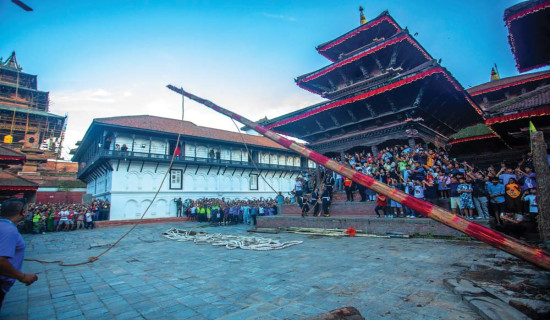
-square-thumb.jpg)
